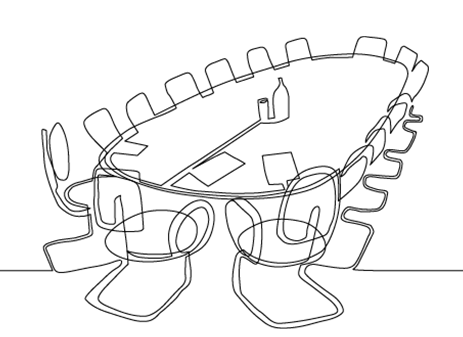Boardroom threats are driven by supply chain problems
Forty percent of businesses say their brand image has been markedly tarnished due to disrupted supply chains,5 but businesses leaders appear not yet to be fully focused on this risk either as an emerging D&O liability, or a broader reputational risk. Fewer than a fifth - a median of just 17% - predicted that boardroom risk would become their top concern in 2022.
With many companies already reporting a rise in customer complaints, delays to product launches and the consequent loss of regular customers in 2021. It seems inevitable that valuations will suffer during 2022 if supply chain issues continue, and that shareholder actions against directors are likely to follow.6 This could also possibly push the issue up the boardroom agenda as we look further ahead.
Why is reputation risk so multi-faceted?
Of course, supply chain is not the only driver of boardroom and reputation risk. Many other factors are at play, not least the threat that COVID-19 and its many variants pose from a broader liability perspective. As businesses face challenges from customers, suppliers and employees in terms of duty of care, so company leaders are coming to grips with the challenges of operating in a much less predictable social and economic environment.
Undoubtedly, there is a risk that COVID-19 issues will drive D&O claims as COVID-19 positive employees or their families bring injury and manslaughter claims or raise issues around vaccine mandates – with potential for actions from those required to vaccinate as well as from those who caught COVID-19 from unvaccinated employees. More employer liability issues may also arise in terms of companies’ ability to maintain appropriate support for staff isolated during lockdowns, or alleging discrimination in terms of promotions, pay and conditions as employees make different decisions about how and when to return to the office.
Against this backdrop, it is inevitable that the risk of perceived corporate mismanagement will remain elevated,7 putting corporate reputations very firmly under the spotlight and raising expectations of insurers to step in and help mitigate reputational risk. Rising expectations in terms of ESG reporting only serve to up the ante.

All companies are being asked to raise their game in terms of ESG reporting. Issues are likely to arise around how companies manage their compliance obligations and how they communicate with stakeholders. Any companies that miss regulatory or self-imposed targets could potentially face litigation; even those companies that succeed in achieving their ESG goals will face the risk of being accused of greenwashing. This is an area we are very conscious of in our underwriting and it is the subject of extensive discussion with clients and brokers.
Wayne ImrieFocus Group Leader - London Market D&O
What do businesses’ resilience scores tell us?
As we move towards a post COVID-19 world, with every aspect of how, when and where to do business remaining under scrutiny, including how to manage the customer interface; to enforce or adapt employment contracts and report accurately, businesses across the board score their resilience to boardroom and reputation risks at the lower end of our spectrum, with a median of 37% of US and UK boardrooms expecting to feel ‘very prepared’ to anticipate and respond to reputation risks in 2022, falling to just 36% for boardroom risks.
The industry feeling particularly exposed to boardroom risk in the US is hospitality, with just 33% feeling very prepared. In the UK manufacturing, retail, wholesale and food and beverage businesses score lowest at 28%.
How can insurance support reputation risk transfer?
Insurance is a need, not a want. If the frequency and severity context is not real, companies will seek to retain the risk themselves. The question for this year therefore is when will boardroom and reputation risks achieve critical mass?
Only when boardroom and reputation threats fall into the high risk/low resilience quadrant of the risk resilience matrix will novel approaches to D&O and reputation risk find their place in the market.

We must make best use of artificial intelligence (AI) and industry intelligence to support our customers to manage their reputation by benchmarking objectively against their peers to understand the material implications of what their stakeholders are saying in real time.
George BeattieHead of Incubation Underwriting, Beazley
